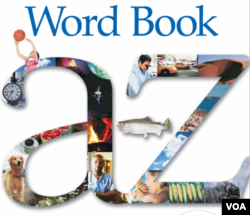Download Lesson 13
Conversation
(blue font shows conditional sentences)
Prof. Bot: We are back with Anna and Caroline and the bees. Last time, Anna was afraid. (Anna: I'm not afraid of bees!) But Caroline is helping her to stay safe. Look at sentences that start with "If" to find more conditional sentences. Remember, Type 1 conditionals use the present tense and "will," and Type 2 use the past tense and "would." Now, let's find out what happens with Anna and the bees.
Caroline: I have a feeling that your fear of bees will be gone soon. There are things beekeepers do to protect ourselves. For example, we wear protective clothing. This is a beekeeper’s veil, suit and gloves. There are other things we can do, too. If I use a smoker, the bees will stay calm.
Anna: Let’s use smoke … lots of smoke.
Caroline: Okay, Anna, that’s enough smoke. Another thing you can do is stay calm. Okay. When I lift the frame, you will see the bees.
Anna: I’m ready. Let's do this thing!
Caroline: Okay, let's put on our protective clothing.
Caroline: I will carefully take out a frame. This is where the bees live. There are worker bees, drone bees and the queen bee. The bees have different jobs. The queen bee lays the eggs. The worker bees collect nectar and pollen from flowers and bring it back to the hive. Then they make honey! Now, you hold the frame. There are the bees.
Anna: There are so many! And they are so busy! Now I know why we say, “busy as a bee!”
Caroline: Good job, Anna.
Anna: Caroline, bees are beautiful and important. If I wanted to help the bees, what would I do?
Caroline: Great question. You can plant native flowers that bees like. Here’s a book to help you know which ones to plant.
Anna: It’s a beautiful book. And look, it tells you which bees like which types of flowers.
Caroline: It also tells you how the flowers affect the flavor of the honey.
Anna: Flowers make a big difference to bees. If they don’t eat, they won’t live.
Caroline: Buying local honey also helps the bees. If you want to help bees, do those two things.
Prof Bot: I learned a lot about bees. Hey, if I worked with bees, I would not need protective clothing! Guess what? That was a Type 2 conditional. And I heard a Type 1 conditional, too. (Anna: If they don’t eat, they won’t live.)
Anna: Thanks for the book, Caroline, and the bee puppet and for teaching me about bees. Look … I’m not scared.
Caroline: Good job, Anna. If you ever want to see the bees again, I’ll be here! You have my business card. I'll let you see yourself out.
Anna: Thanks! Bye! I will plant tons of flowers!
Bees: Thanks, Anna. (bees spell out the words)
Anna: Sure thing, bees! Oh, and I'm sorry about hitting that hive when I was a little girl.
Bees: We love you, Anna. (bees make a heart sign.)
Anna: Take care, bees! (to herself) Which way is the Metro?
Bees: That way. (they draw an arrow)
Anna: Thanks!
Prof. Bot: So, if I you want to learn more about bees, visit your local beekeeper like Anna did. Maybe you can try some local honey, too.
Now it’s your turn. Practice making conditional sentences. If you practice, you will become better at them. That's type 1!
Listening Quiz
See how well you understand this lesson by taking a listening quiz. Play each short video, then choose the best answer.
Free Materials
Download the VOA Learning English Word Book for a dictionary of the words we use on this website.
For Teachers
Send us an email if you have comments on this course or questions. Be sure to download the lesson plan.
Comments
Now it's your turn. Send us an email or write to us in the Comments section below or on our Facebook page to let us know what you think of this lesson.














